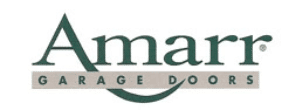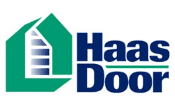
Troubleshooting Common Garage Opener Issues
Ever try opening your garage door and when you press the button, nothing happens? This is a common problem among homeowners and here you’ll find possible reasons why.
A malfunctioning garage door opener can be a major inconvenience, disrupting your daily routine and compromising the security of your home. Understanding the common issues that can occur with garage door openers and knowing how to troubleshoot them can save you time, money, and frustration.
In this blog post, we will discuss some of the most common garage opener issues and provide practical solutions to help you restore smooth and reliable operation to your garage door.
Gear & Sprocket Assembly
One problem could be the gear and sprocket assembly. In garage door openers, a motor turns the gear and drive shaft inside the opener, which rotates the sprocket attached to the top of the drive shaft. This turns the chain and moves the door. Most of the time the problem is when the ridges in the gear wear out because the gear lubrication has evaporated.
As a result of the worn gear, the sprocket cannot turn the chain and the door will not open or close. Problems might include stripped gears or a broken sprocket and we suggest replacing both at the same time to ensure proper operation.
If that’s not it, then…
Other issues might be the screw drive limit switches that may have come loose or gone bad. The two types of limit switches are mechanical and magnetic. Both are mounted directly to the garage door opener rail. The switches may be loose or need replacing.
Other Common Issues with Garage Door Openers
Door Fails to Open or Close
One of the most prevalent issues homeowners encounter is when the garage door fails to open or close. Start by checking the power source to ensure the opener is receiving electricity. If the power is connected, examine the batteries in the remote control or keypad and replace them if necessary. Additionally, check the safety sensors located near the bottom of the door. Ensure they are clean, aligned properly, and not obstructed by any objects.
Noisy Operation
Garage doors can become noisy over time due to worn-out components or lack of lubrication. Begin by inspecting the rollers, hinges, and tracks for any signs of damage or excessive wear. Apply a silicone-based lubricant to the moving parts, avoiding oil-based products that can attract dust and debris. If the noise persists, it may be necessary to replace worn-out components or consult a professional for further assessment.
Remote Control or Keypad Malfunction
When the remote control or keypad fails to operate the garage door opener, there are a few troubleshooting steps to consider. Start by checking the batteries in the remote control or keypad and replace them if needed. Ensure that the opener’s antenna is hanging down and not damaged or obstructed. If the issue persists, reprogram the remote or keypad following the manufacturer’s instructions.
Door Reverses Immediately After Closing
If your garage door starts to close but immediately reverses back up, the problem may lie with the safety sensors. Check for any obstructions or dirt on the sensors and clean them if necessary. Ensure that the sensors are aligned properly and facing each other. In some cases, adjusting the sensor alignment may resolve the issue. If not, it may require professional assistance to diagnose and fix the problem.
Slow or Inconsistent Operation
If your garage door moves sluggishly or inconsistently, examine the tracks for any debris or obstructions that may impede smooth movement. Clean the tracks thoroughly and tighten any loose bolts or hardware. It is also important to inspect the garage door springs for signs of wear or damage. Springs that are worn out or improperly adjusted can affect the door’s operation and require professional attention to resolve.
Still not working?
Another problem may be a problem with the safety eyes. If your garage door isn’t closing properly, the problem is usually the safety sensors located at the bottom corners of your garage door. These ensure children, pets, or others are not obstructing the safety eyes signal. The safety eyes must maintain a clear line of sight to one another. Once that line is obstructed, the broken signal tells the opener to stop closing.
Dealing with common garage opener issues can be frustrating, but with a little troubleshooting and maintenance, many problems can be resolved without the need for professional assistance. By familiarizing yourself with these common issues and their solutions, you can keep your garage door operating smoothly and ensure the security and convenience of your home.
However, for complex issues or situations where safety may be compromised, it is always advisable to consult a qualified garage door professional to assess and repair the problem.













